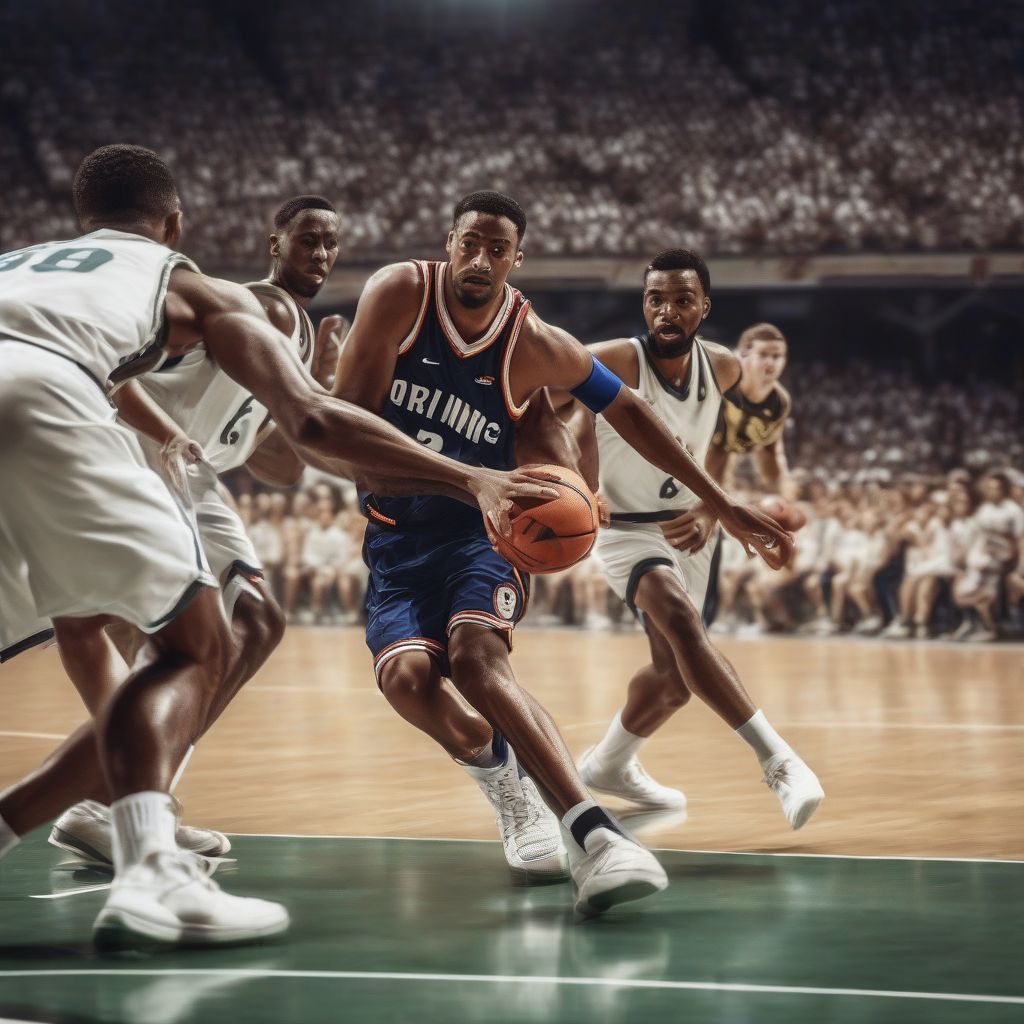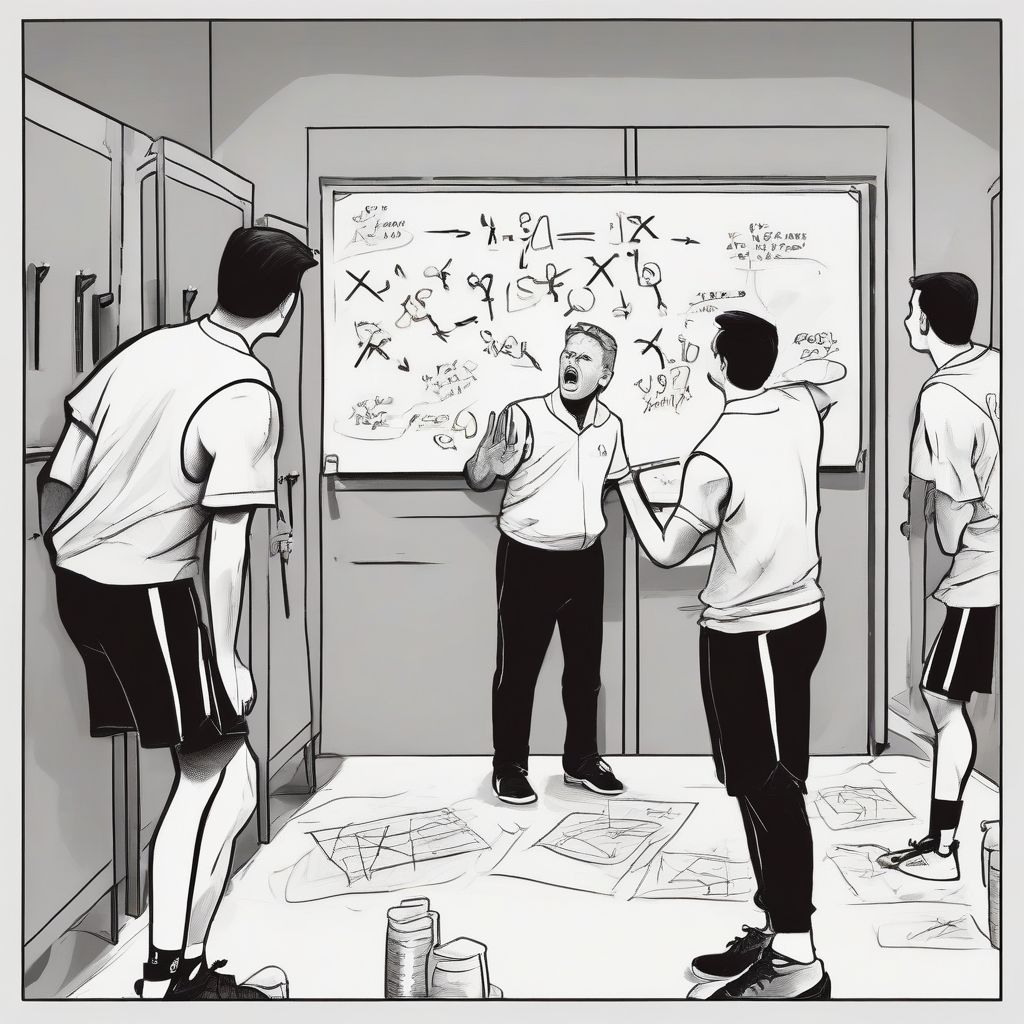“The strength of the team is each individual member. The strength of each member is the team.” – Phil Jackson
This quote from the legendary coach Phil Jackson perfectly encapsulates the essence of basketball. It’s a sport where individual brilliance can shine, but ultimately, teamwork and strategic execution determine victory. As a nutritionist and meal prep coach, I understand the importance of having a solid game plan – just like a well-structured meal plan helps achieve fitness goals, a well-defined basketball strategy is crucial for on-court success. So, let’s dive into the fascinating world of basketball team strategies, breaking down the plays, formations, and tactical decisions that make this sport so captivating.
Offensive Strategies: Painting Masterpieces on the Court
A basketball team’s offense is like a well-choreographed dance, with players moving in sync to create scoring opportunities. Here are some of the most common offensive strategies:
1. Motion Offense: The Art of Constant Movement
Imagine a school of fish darting and weaving through a coral reef – that’s the essence of the motion offense. Players are in perpetual motion, setting screens, making cuts to the basket, and passing the ball with precision. This constant movement keeps the defense guessing, creating open shots and driving lanes.
Key Principles of Motion Offense:
- Spacing: Players maintain optimal spacing to prevent clogging the lane and open passing lanes.
- Screening: Players set screens (legal blocks) for teammates to free them for open shots or drives to the basket.
- Cutting: Players make sharp cuts towards the basket, exploiting gaps in the defense.
- Passing: Crisp, accurate passing is crucial to keep the defense off balance.
Example: The San Antonio Spurs, under coach Gregg Popovich, have been renowned for their fluid motion offense, characterized by beautiful passing sequences and high basketball IQ.
2. Pick and Roll: A Two-Man Symphony
The pick and roll, often called basketball’s “bread and butter” play, is a simple yet incredibly effective two-player game.
How it Works:
- The ball handler dribbles towards a teammate (the screener) who sets a screen for them.
- The ball handler then has several options: shoot, pass to the rolling screener, or find an open teammate.
Variations: The pick and roll has numerous variations, including pick and pop (the screener pops out for a jump shot) and the “Horns” formation (two screeners set high picks).
Example: The Golden State Warriors, led by Stephen Curry and Draymond Green, have mastered the pick and roll, turning it into an almost unstoppable offensive weapon.
3. Isolation (ISO): Unleashing Individual Brilliance
Sometimes, the best strategy is to let your star player go one-on-one against their defender. Isolation, or ISO, plays do just that. The offense clears out one side of the court, giving their best scorer space to work their magic.
Effective ISO Players: ISO plays are most effective when you have a player with exceptional dribbling skills, footwork, and the ability to create their own shot – think Michael Jordan, Kobe Bryant, or LeBron James.
 Basketball Isolation Play
Basketball Isolation Play
4. Fast Break: Turning Defense into Offense
The fast break is basketball at its most exhilarating. After a steal or rebound, the offense races down the court, aiming to score before the defense can set up.
Keys to a Successful Fast Break:
- Speed: Players sprint down the court at full throttle.
- Passing: Outlet passes are thrown quickly and accurately to advance the ball.
- Decision Making: Players must make split-second decisions about whether to shoot, pass, or drive to the basket.
Example: The “Showtime” Los Angeles Lakers of the 1980s, featuring Magic Johnson leading the break, were masters of turning defense into instant offense with their dazzling fast breaks.
Defensive Strategies: Building a Wall of Resistance
Defense wins championships – it’s a basketball adage as old as time. A strong defense can stifle even the most potent offenses. Here’s a look at some common defensive strategies:
1. Man-to-Man Defense: Guard Your Man, Guard Your Basket
Man-to-man is the most fundamental defensive strategy. Each player is assigned to guard a specific opponent, following their movements and trying to prevent them from scoring.
Key Principles:
- Defensive Stance: Players maintain a low, balanced stance, with their hands active to disrupt passing lanes.
- On-Ball Defense: The defender on the ball applies pressure to the ball handler, forcing them to make difficult decisions.
- Help Defense: Teammates provide support by “helping the helper” if their man’s offensive player gets past the initial defender.
2. Zone Defense: Protecting the Paint Like a Fortress
In zone defense, players guard specific areas of the court rather than individual players. It’s like setting up a fortress around the basket, making it difficult for opponents to penetrate.
Types of Zones:
- 2-3 Zone: Two players guard the perimeter, while three players protect the paint.
- 3-2 Zone: Three players guard the perimeter, while two players patrol the paint.
- 1-3-1 Zone: One player defends the top of the key, three players across the middle, and one player protects the basket.
Advantages of Zone Defense:
- Protecting the Paint: Zone defenses are particularly effective at limiting shots near the basket.
- Conserving Energy: Zone defense can be less physically demanding than man-to-man, allowing players to stay fresh for longer periods.
3. Pressing Defense: Turning Up the Heat
Pressing defenses are all about applying relentless pressure on the offensive team, forcing turnovers and disrupting their rhythm.
Types of Presses:
- Full-Court Press: Defenders pressure the ball handler the entire length of the court.
- Half-Court Press: Defenders trap and pressure the ball handler once they cross half-court.
Example: The “Havoc” defense employed by the University of Virginia Cavaliers under coach Tony Bennett is a prime example of a stifling pressing defense.
Coaching Strategies: Masterminding the Game Plan
Behind every successful basketball team is a coach who serves as the architect of the game plan.
Key Coaching Responsibilities:
- Developing a System: Coaches establish the team’s offensive and defensive philosophies.
- Making In-Game Adjustments: Coaches analyze the flow of the game, making substitutions and tactical adjustments to exploit opponent weaknesses.
- Motivating Players: Coaches inspire their players, fostering a winning mentality.
Legendary Coaches: The annals of basketball history are filled with coaching legends like Red Auerbach, Phil Jackson, Pat Summit, and John Wooden, who have left an indelible mark on the game with their innovative strategies and leadership.
 Basketball Coach Drawing Play
Basketball Coach Drawing Play
Conclusion: The Beauty of Basketball’s Strategic Tapestry
Basketball is a game of intricate strategies, where every possession is a battle of wits and execution. From the fluidity of the motion offense to the unyielding wall of a well-executed zone defense, the strategic nuances of the game are endless. Understanding these strategies not only enhances your appreciation for the sport but also reveals the importance of teamwork, preparation, and adaptability – qualities that extend far beyond the basketball court. So, the next time you watch a basketball game, pay close attention to the strategies at play – you’ll be amazed by the depth and complexity of this beautiful game.
What are some of your favorite basketball strategies? Share your thoughts and insights in the comments below! Let’s continue the conversation and deepen our appreciation for the game we love.
- Pluff, Gary (Author)
- English (Publication Language)
- Adkins, Clint (Author)
- English (Publication Language)
- Brundage Jr., Vernon (Author)
- English (Publication Language)
- Amazon Kindle Edition
- Calabrese, Jason (Author)
- Wilson, James (Author)
- English (Publication Language)
- Eric Sacharski (Author)
- English (Publication Language)
- Hamers, Inez (Author)
- English (Publication Language)
- Wright, Matthew (Author)
- English (Publication Language)
- Amazon Kindle Edition
- Greene, Nick (Author)
- TICKER, CHAD (Author)
- English (Publication Language)











